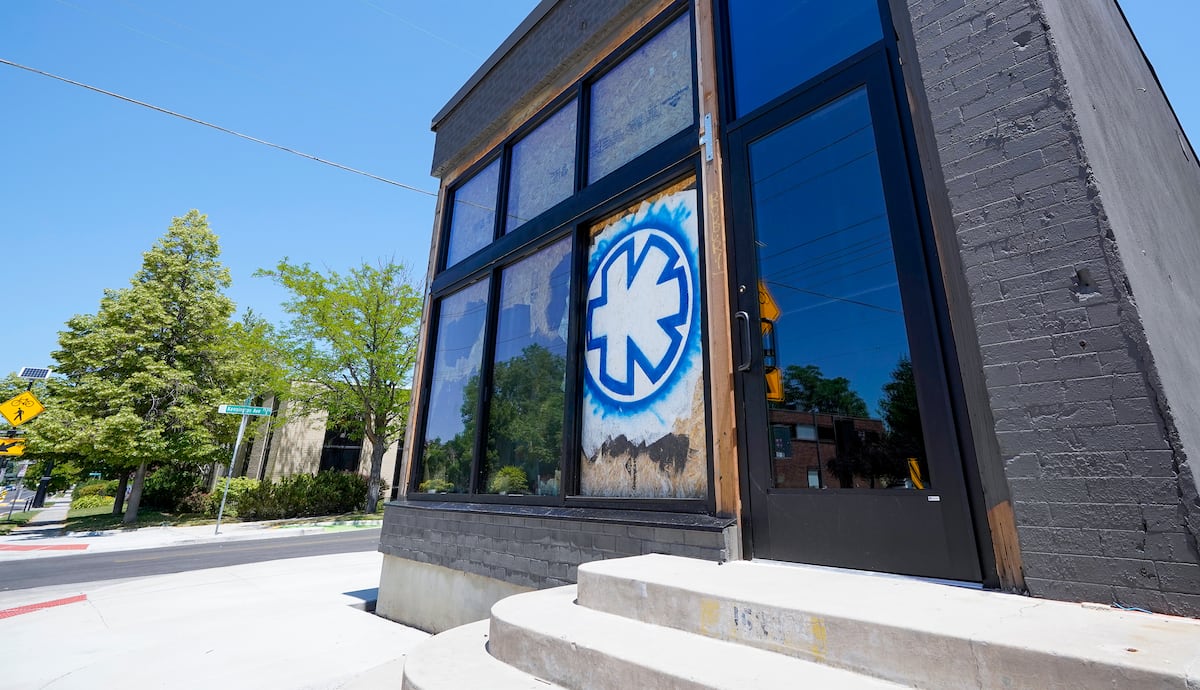Utah’s liquor commission approved licenses for three bars and and seven restaurants Thursday, including the long-awaited second location of Kiitos Brewing.
The commission for the Utah Department of Alcoholic Beverage Services’ (DABS) also learned that a program to allow customers to “round up” purchases to the nearest dollar — and donate the difference to help unsheltered Utahns — has been successful in its first weeks.
During the board’s monthly meeting Thursday, Todd Darrington, DABS’ director of finance, said $87,989 had been raised so far for the Pamela Atkinson Homeless Account, to support its homelessness services.
Commissioner Jacquelyn Orton said she found that number to be “extraordinary.”
Through Feb. 28, shoppers at Utah’s state-run liquor stores will also find donation boxes, each supporting a different local charity. With the donation of coats, canned goods, pet food and more, customers can help organizations (see a full list at ABS.utah.gov) that support people and animals across the state.
DABS director Tiffany Clason spoke about the importance of having a plan for a safe ride home when people go out to drink. That’s why DABS has partnered with WCF Insurance and the Utah Department of Public Safety, she said, to have WCF offer $10 rideshare vouchers for bar patrons needing a ride home. People can get the vouchers by scanning a QR code at the door of the bar they’re visiting.
The bars that received their licenses Thursday are:
• SnowmoBAR, 877 S. 200 West, Salt Lake City (conditional, projected opening Jan. 1, 2025). This bar will be a rebrand of Snowmobile Pizza, which has been closed since August for a remodel.
• Eleven Nightclub, downtown Salt Lake City (conditional, projected opening Jan. 10, 2025).
• Kiitos Brewing, 1533 S. 1100 East, Salt Lake City (conditional, projected opening Jan. 28, 2025). Business manager Jamie Kearns said February is looking more likely for the opening of this second Kiitos location, in Sugar House.
The restaurants that received their licenses are:
• Don Miguel’s, 453 S. Main St., Cedar City.
• The Hub, 1165 S. Main St., Heber City.
• Cody’s Gastro Garage, 2100 S. Main St., Nephi (conditional).
• Back Spin Bistro, St. George (conditional, projected opening Jan. 1, 2025).
• Cosmica, Salt Lake City (conditional, projected opening Jan. 15, 2025).
• Lucky Slice Pizza, 37 W. Center Street, Logan (conditional, projected opening Feb. 1, 2025; this is a new location).
• Hash Kitchen, Salt Lake City (conditional, projected opening Feb. 14, 2025).



























/cdn.vox-cdn.com/uploads/chorus_asset/file/25782636/247422_ChatGPT_anniversary_CVirginia.jpg)
/cdn.vox-cdn.com/uploads/chorus_asset/file/25789444/1258459915.jpg)

/cdn.vox-cdn.com/uploads/chorus_asset/file/25546252/STK169_Mark_Zuckerburg_CVIRGINIA_D.jpg)


/cdn.vox-cdn.com/uploads/chorus_asset/file/23951353/STK043_VRG_Illo_N_Barclay_3_Meta.jpg)